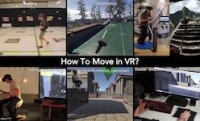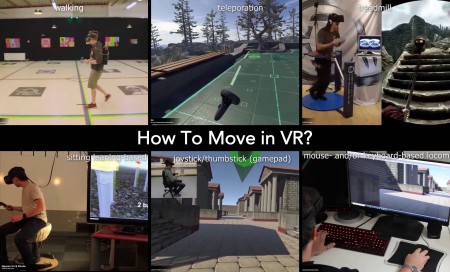
There are a multitude of different VR locomotion interfaces out there, all with their own pros and cons. In fact, far too many to all investigate in one behavioural study — so let’s ask diverse VR experts for their opinion…
Interested in supporting research on VR locomotion interfaces and helping the VR community better understand the pros and cons of different interfaces? We created a survey to do just that (open until May 10th):
Do you have 20-40min for a chance to win up to $200 CAD? Do you have at least 2 years of VR experience and used VR at least 20 times? Then fill out our research survey: https://ca.research.net/r/vrlocomotion. (You don’t have to live in Canada — as long as you have a PayPal account you can enter the raffle. There will be more than a dozen cash prices, ranging from $10, 50, 100 to 200).
Below is a video of the different VR locomotion interfaces investigated in this survey (yes, we know there are many more, but we had to limit the number somewhat else the survey would take too long…). In the survey, you will be asked to judge different locomotion interfaces, ranging from walking (free-space, redirected, treadmill, and walking in place) and other cyclical motions (finger walking in place and arm swinging); followed by steering methods such as leaning-based (standing and sitting) and “joysticks” (both regular hand-held joystick, foot joystick, and dash); other continuous locomotion methods including mouse/keyboard and wand/pointing-based; and teleportation as a discontinuous method.
If you’d like to know more about VR locomotion interfaces (after completing the survey, we don’t want to bias you), please check out our VR Locomotion Interfaces course and our 3D user interfaces course or our other projects.
Publications
The below paper includes first data from our locomotion survey (but not yet the full data set)
